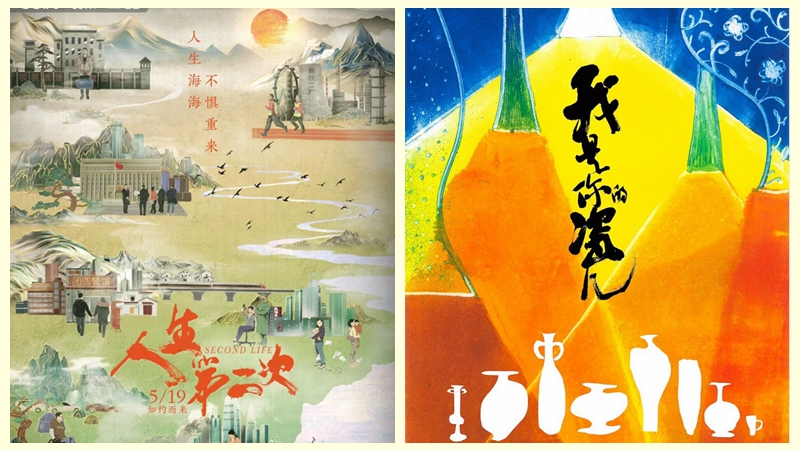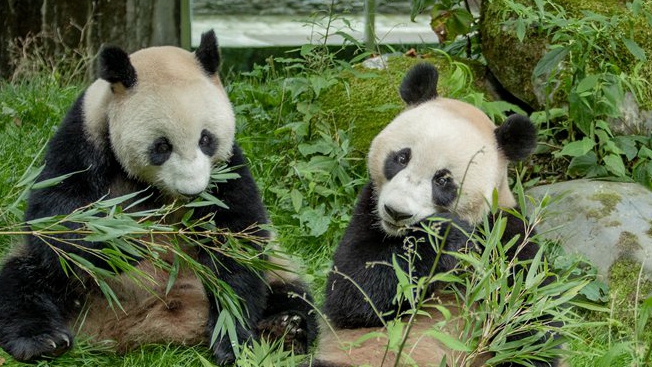Young female saving traditional dyeing craft from dying
LANZHOU, Aug. 16 (Xinhua) -- In traditional Chinese medicine, herbs are often used to help treat illness. But in the hands of Qi Hui, the herbs can turn into works of art.
It is hard to believe that the beautiful colors of the wallets, scarves and handbags in Qi's studio are all dyed from herbs.
The 40-year-old inheritor of the time-honoured dyeing craft hails from Dingxi City, in northwest China's Gansu Province, where the craft with centuries-long history is now under county-level protection as a local intangible cultural heritage.
Dingxi boasts a myriad of herbal medicines. The local specialty, combined with China's tradition of hand-dyeing, leads to the birth of the old craft.
"When I was a child, my grandmother used to fork up the roots of plants grown in the mountains and then boil the roots to help dye clothing. I can still recall that lovely shade of orange of the clothing. I was captured by the charm of the traditional dyeing method," Qi said, adding that it was from her grandmother that she learnt ancient crafts including hand-dyeing, embroidery and paper cutting.
For Qi, dyeing with the help of natural herbs remains the most fascinating. "In modern society, it's common to use chemicals for dyeing. But the traditional way of extracting coloring pigments from herbs can be both fashionable and close to nature," said Qi.
The primitive method demands huge reserves of patience, as specific alkaline pigments must be boiled within an appropriate time period at around 20 degrees Celsius. "Even a one-minute nuance can result in the wrong color," Qi explained.
Such a perfect integration of the old craft and modern textiles soon won consumers' hearts. In 2016, with the support of the local government, Qi established her studio to produce more artwork using dyeing, embroidery and handbag making skills.
She also trained hundreds of rural women workers for free, hoping that their participation in the old tradition could help local females lead better lives. Wang Meier, a local villager, earned about 6,000 yuan (about 886 U.S. dollars) during her two-month training course in the studio.
"Young people are essential to the development of rural China. As a member of the young generation, I view devoting myself to the rural development cause as my long-term endeavor and commitment," Qi added.
In 2019, Qi registered a company to produce and sell handicrafts built upon the traditional dyeing method. More than 70 employees work in her company, including 60 casual workers who can embroider and dye clothing in their spare time without delaying daily farm work. The company has now received about 10,000 orders.
Qi is now head of Dingxi's intangible cultural heritage association. She plans to further explore the artistic value of the old dyeing craft.
"I hope that the traditional art could help spread traditional Chinese culture and allow more to be touched by its beauty. It's also my dream to help more females to earn a better life by their own hard work. The ancient craft can create way more value," Qi said.
Photos
Related Stories
- 10-year-old Chinese girl inherits traditional craft of making glass grapes
- Art on fingertips: Cute mini ceramics
- Explore glittering tradition of inlay craftworking techniques in north China’s Inner Mongolia
- Leather carving artist brings his designs to life vowing to protect, pass on traditional craft
- CraftAlive show held in Canberra, Australia
- In pics: inheritor of Taiyuan traditional lacquer craft
- Weaver brings traditional ethnic dyeing crafts to outside world
- Cultural, creative project provides skill training for women in poverty in Guizhou, SW China
- Old inspiration
- Ancient silver thread craft in Chengdu
Copyright © 2022 People's Daily Online. All Rights Reserved.









